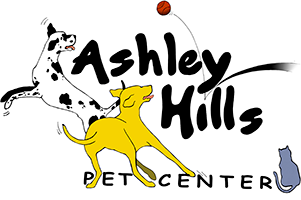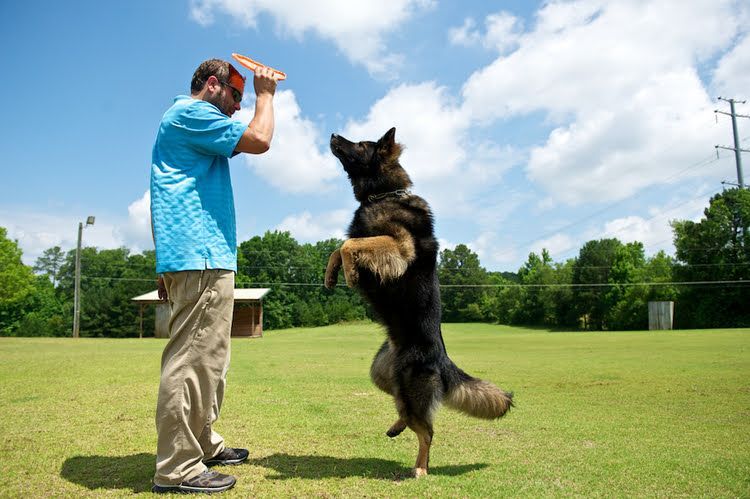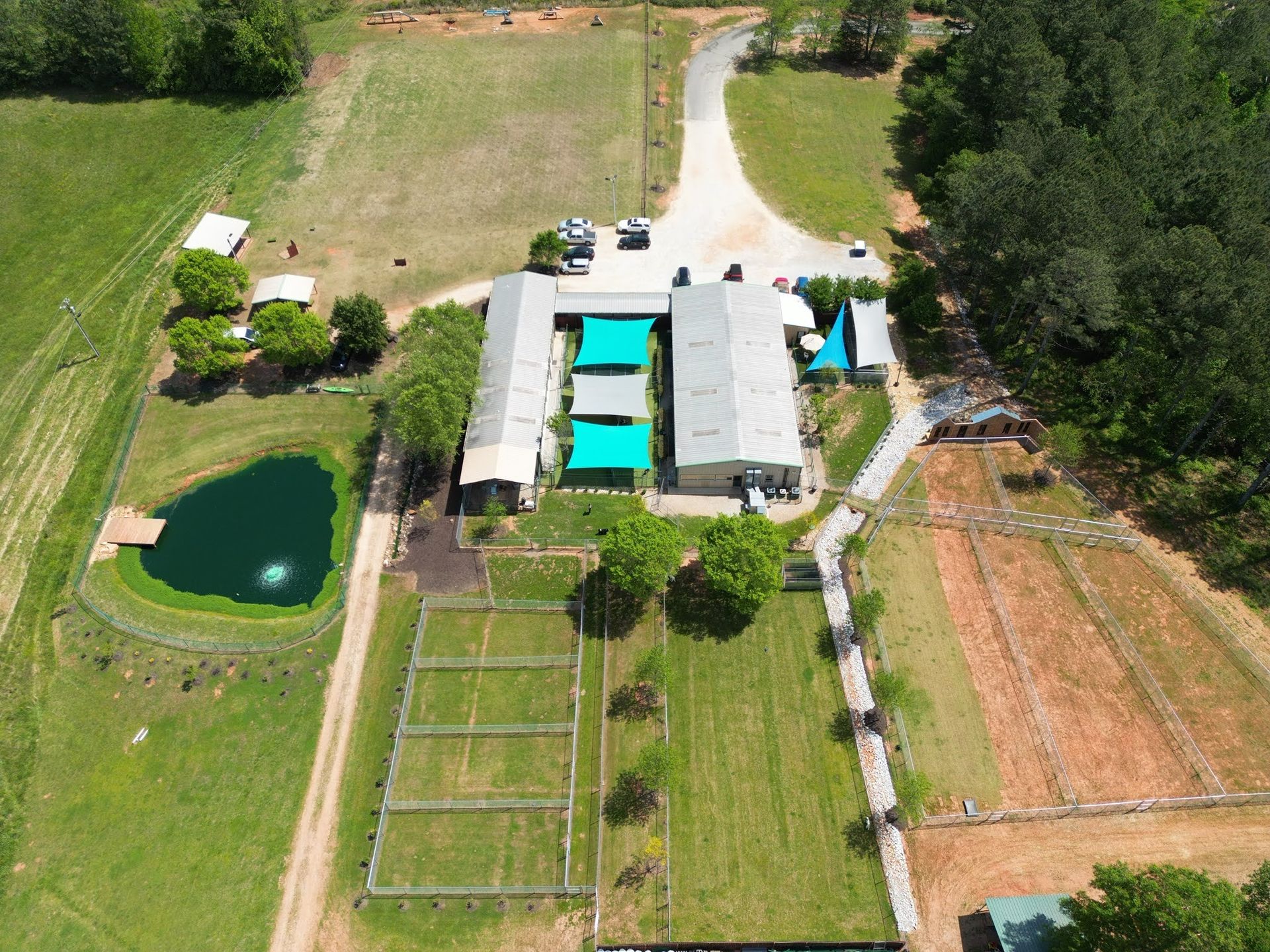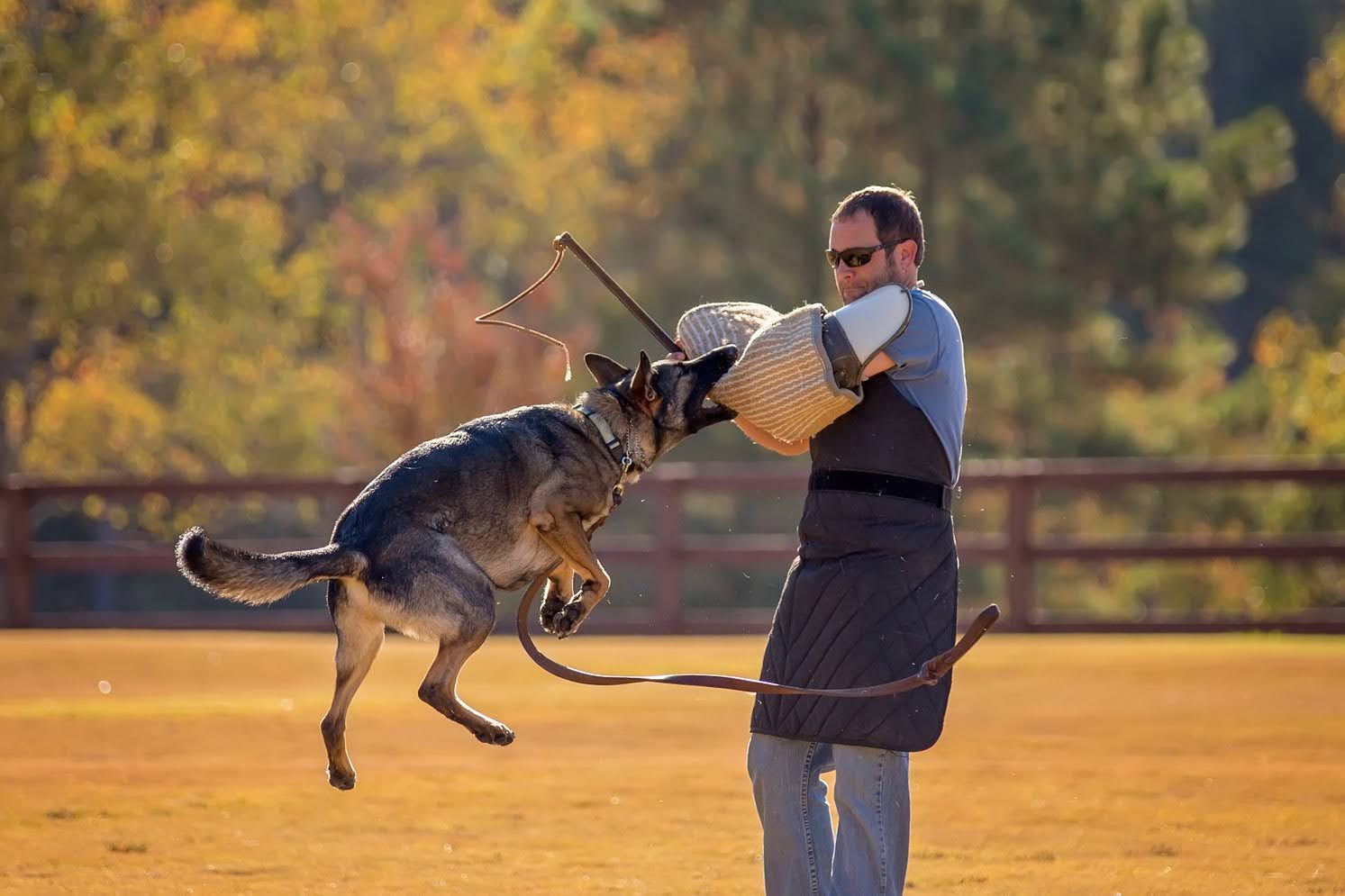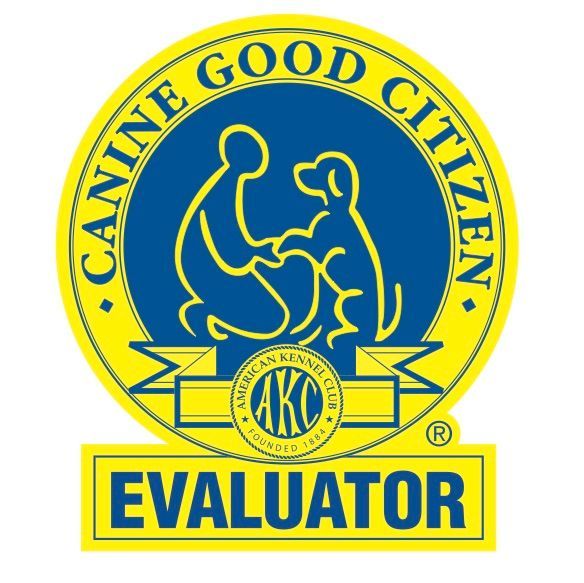Dog Obedience and Behavior Training
At Ashley Hills Pet Center, we believe a well-trained dog is a happy dog! Let us help you obtain your training goals, imprint your young puppy, or help you work through behavioral issues that could be causing conflict between you and your pet or other pets. With a combined 30 years experience, we feel certain we can help you get a plan of action that fits your and your pet’s needs.
Before we begin any training, we require an evaluation. This allows you to meet the trainer that will be working with you and your pet. It also allows the trainer an opportunity to talk with you about your goals, and to fully assess your dog’s personality and temperament. At this time, we can determine what program will suit your family best, and discuss pricing and availability.
It’s very important to keep in mind that your willingness and dedication is crucial to your dog’s advancement and success in training.

Board & Train
Our comprehensive Board and Train Program lasts 14 days. During the program, your dog is taught the basics to walk on a loose leash, sit, down, stay, wait at the door, recall, and a "place" command.
This all-inclusive program includes up to 3 daily lessons, daily playtime, boarding, feeding, administering of medications, a bath and private lesson at departure along with written instructions and a certificate of completion. Your pet will also go home with a raised cot in which he/she has been trained to use for their “climb” or “place” command. This program also includes 2 follow-up private lessons! (The follow-up lessons must be used within 6 months of completing the Board & Train Program.)
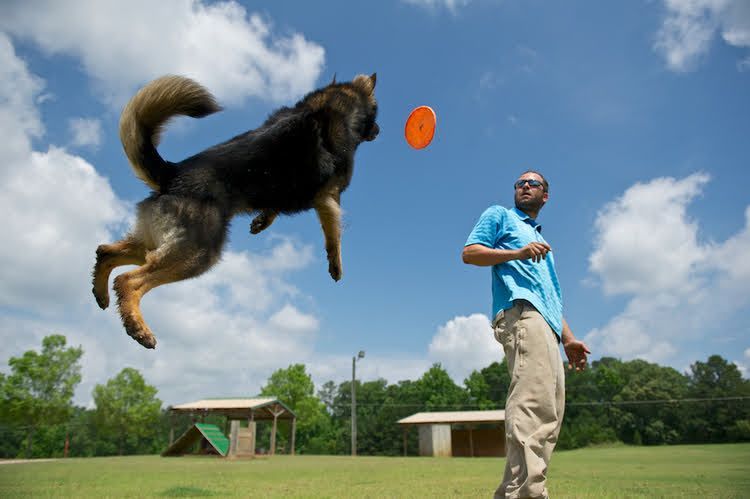

Electronic Collar Board and Train
We also offer an all-inclusive 3 week program that is the start to off leash training. Your dog learns the same basic commands as the 2 week course, as well as things like extended distance recalls, working under distractions, sit and down from a distance, etc. It’s important to keep in mind that control while on a leash is still just as important; therefore, during this course everything is taught on leash first and then we start incorporating the steps to being off leash. At the end of this program your dog receives a bath and blow dry, a private lesson with you at pickup, written instructions, a certificate of completion, a raised cot for their “climb” command and two follow up private lessons! (Follow- up lessons must be used within 6 months of completing the Board & Train Program)

Private Lessons
Private lessons are a great opportunity for you and your pet to learn alongside each other. Some of the benefits to taking this approach to training are building a bond and gaining respect from your dog. You can learn more about behaviors and have a better understanding of why you may be seeing certain types of behaviors from your dog. These lessons can either be at our facility or, if you have a specific location you need help at, we can come to you. Lessons are scheduled at your convenience and not on a set weekly basis, as we know life happens and you may need some time to practice in between lessons.

Daycare Training
Daycare is a wonderful form of socialization in a controlled and safe environment. While your pet is away for the day, you can add on a daycare lesson to work on a specific behavior or refresh your pet on a previously taught command. We recommend this program as a refresher course or for specifics. If you want to use this program to put full basic obedience on your dog, it is important to realize that it’s very demanding on the owners time to pick up and drop off daily. Consistency is a vital part of training. Therefore, if your dog goes through this course, we recommend 4-5 consecutive days and then a private lesson for you on the final day to have the opportunity to catch up on what your dog has learned so that you can reinforce it.

Train by the Day
If you’re only needing a refresher course or specific behaviors worked on, then your dog may not need a full obedience program. Train by the Day is similar to the daycare training program, only it is designed to add onto boarding stays. It’s important to remember that dogs can only learn and retain so much at one time, so be fair to them in what you expect them to learn during a short boarding stay.
Cancellation Policies
- No showed private lessons will be required to pay a deposit to rebook. Private lessons that are rescheduled more than twice (excluding weather) will require a deposit to rebook. Appointments canceled within 48 hours may be required to pay a deposit to schedule the next appointment.
- Saturday private lessons require a credit card on file and are subject to a $30 fee if no showed or canceled in less than 48 hours. Clients with a prepaid private lesson package may have a lesson removed instead of the cancellation fee.
- Follow up lessons that come with board & train packages expire 6 months after the board & train program is completed.
- Confirmation calls are provided two days prior to your appointment. Please reach out if you do not receive a confirmation call.
CGC Testing
Ashley Hills Pet Center offers AKC Canine Good Citizen testing! The CGC Certification covers all basic obedience skills as well as interactions with strangers. The purpose of the test is to ensure that dogs are respected members of their communities and are trained to act mannerly in the home, in public places and in the presence of other dogs. Dogs that pass the CGC test are deemed to be reliable family and community members and will receive a certificate from the American Kennel Club. Your dog does not need to be pure bred to receive this certification from the AKC!
Not only will this give you the peace of mind that your dog is well behaved, but it can also be extremely helpful when renting a place to live or acquiring homeowner’s insurance!
Akc Canine Good Citizen Test
The CGC TEST consists of 10 skills needed by all well-mannered dogs. All of the exercises are done on a leash using only a flat collar. Treats may not be used during the test.
Test 1
Accepting a friendly stranger
The dog will allow a friendly stranger to approach it and speak to the handler in a natural, everyday situation.
Test 2
Sitting politely for petting
The dog will allow a friendly stranger to pet it while it is out with its handler.
Test 3
Appearance and grooming
The dog will welcome being groomed and examined and will permit someone, such as a veterinarian, groomer or friend of the owner, to do so.
Test 4
Out for a walk (walking on a loose lead)
The handler/dog team will take a short “walk” to show that the dog is in control while walking on a leash.
Test 5
Walking through a crowd
The dog and handler walk around and pass close to several people (at least three) to demonstrate that the dog can move about politely in pedestrian traffic and is under control in public places.
Test 6
Sit and down on command and Staying in place
The dog will respond to the handler’s commands to 1) sit, 2) down and will 3) remain in the place commanded by the handler (sit or down position, whichever the handler prefers).
Test 7
Coming when called
The dog will come when called by the handler. The handler will walk 10 feet from the dog, turn to face the dog, and call the dog.
Test 8
Reaction to another dog
To demonstrate that the dog can behave politely around other dogs, two handlers and their dogs approach each other from a distance of about 20 feet, stop, shake hands and exchange pleasantries, and continue on for about 10 feet.
Test 9
Reaction to distraction
To demonstrate the dog is confident when faced with common distracting situations, the evaluator will select and present two distractions. Examples of distractions include dropping a chair, rolling a crate dolly past the dog, having a jogger run in front of the dog, or dropping a crutch or cane.
Test 10
Supervised separation
This test demonstrates that a dog can be left with a trusted person, if necessary, and will maintain training and good manners. Evaluators are encouraged to say something like, “Would you like me to watch your dog?” and then take hold of the dog’s leash. The owner will go out of sight for three minutes.
